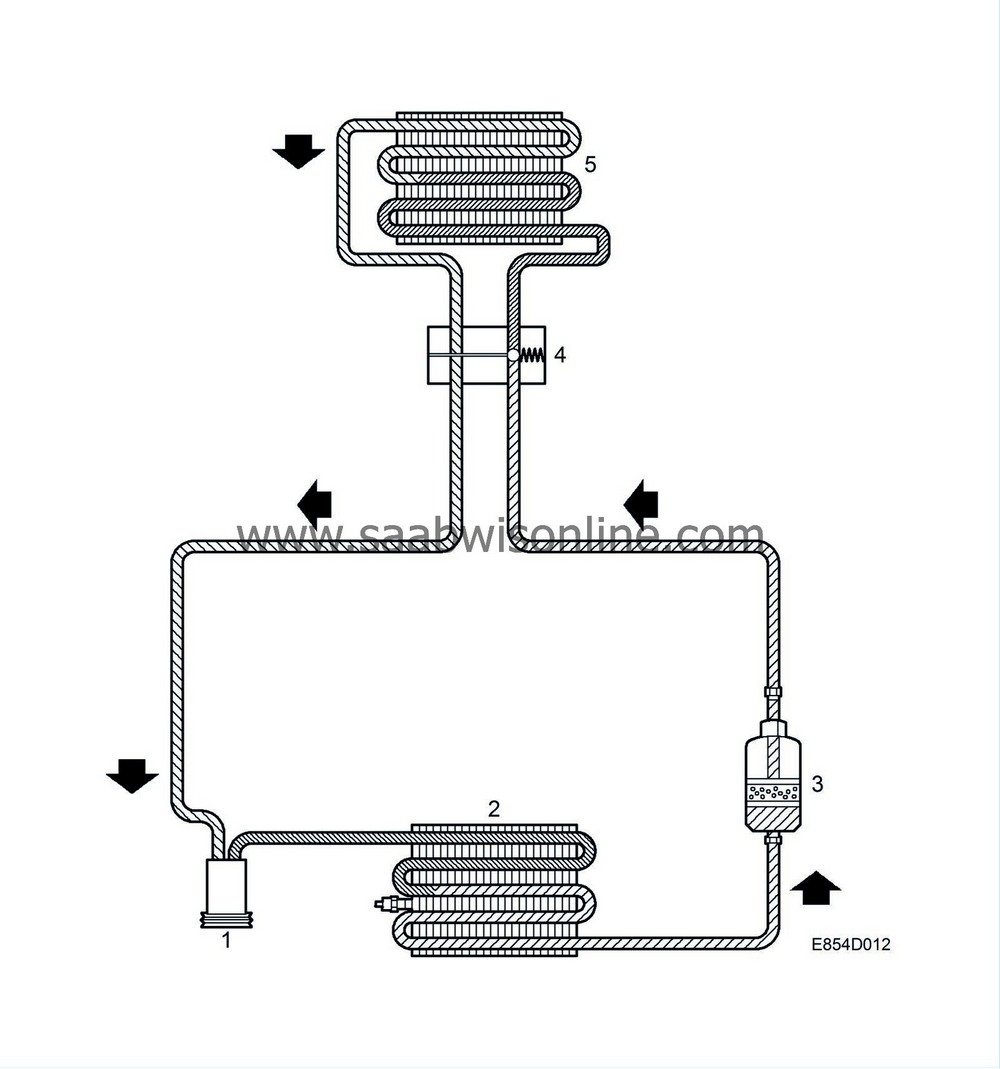PRE-RELEASE
Refrigerant flow
| Refrigerant flow |
1 Compressor
The refrigerant comes to the compressor from the evaporator, at low pressure in gaseous form. The compressor compresses the gas, increasing its pressure and temperature. The warm, gaseous refrigerant is forced on to the condenser.2 Condenser
The hot refrigerant at high pressure is pumped by the compressor to the coil in the condenser. The coil has cooling fins, which are flushed with air. The air movement is produced by a fan and the speed of the car. Since heat always moves from a hot to a cold object, the hot coolant will transfer some of its heat to the cooler air. When the hot, gaseous refrigerant looses some of its heat, it condenses into a liquid.The system pressure sensor is mounted on the condenser.
3 Receiver
The receiver stores and dehumidifies the refrigerant. The refrigerant enters the receiver as a liquid at high pressure and high temperature. It passes through a filter unit, where it is dehumidified and any particles are removed. The refrigerant is then led as a liquid to the expansion valve.4 Expansion valve
The refrigerant that arrives at the expansion valve is in liquid form at high pressure and high temperature. The purpose of the expansion valve is to regulate the quantity of refrigerant that is injected into the evaporator. The valve does not release more refrigerant than can evaporate at one time.5 Evaporator
When the refrigerant enters the evaporator via the expansion valve, it expands. The pressure in the evaporator is considerably lower due to the suction of the compressor.When the refrigerant expands, it turns into a gas (evaporates). This evaporation requires heat. This heat is taken from the air surrounding the evaporator. The cold air is then fed into the cabin. The refrigerant is led in gaseous form on to the compressor.



